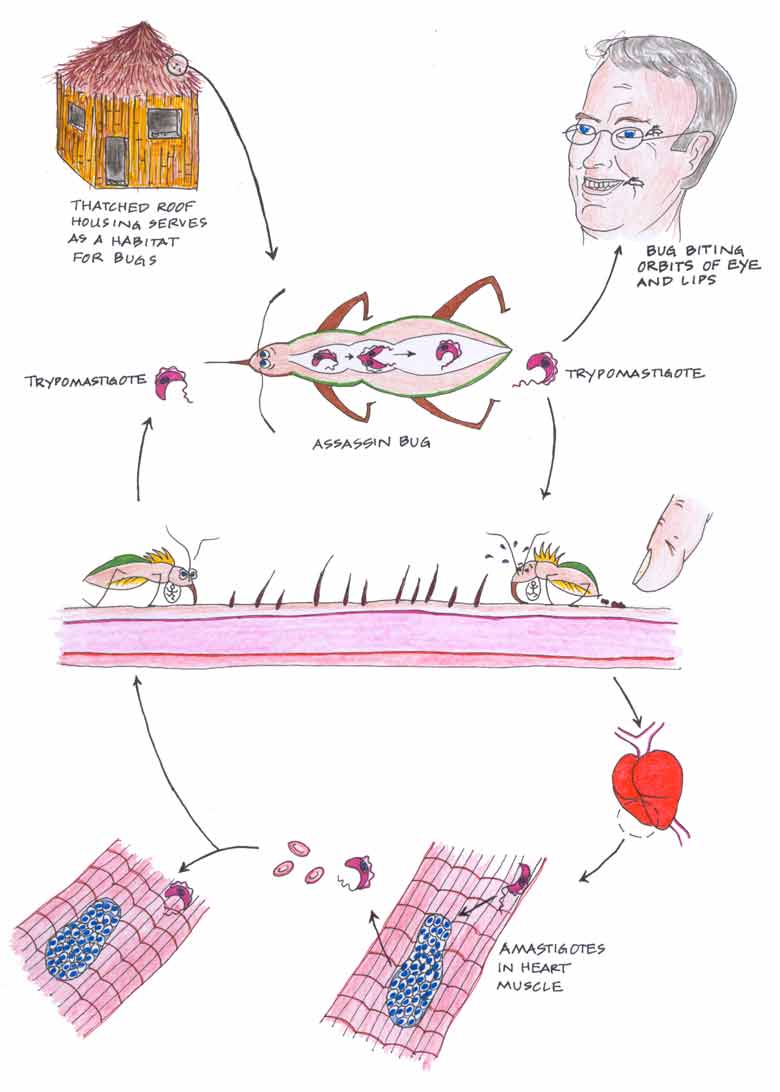
Trypanosoma cruzi causes Chagas disease in Central and South America, occasionally appearing in Mexico and the Rio Grande border of the US. Bugs of the family Reduviidae such as Panstrongylus megistus and Triatoma spp. serve as vectors. These bloodsucking bugs, known as assassin or kissing bugs inhabit roof thatching and as well as crevices in the house and feed nocturnally. The bug commonly bites in the orbits of the eyes or on and around the lips, thus the name kissing bug. The bite is very painful, hence another monicker... assassin bug. The bug often defecates as it feeds and the feces containing the infective metacyclic trypomastigotes, may be rubbed into the wound by the victim. The trypomastigotes are found in large numbers in the bloodstream shortly after inoculation, though they soon enter cells of the spleen, liver, heart and others tissues where they assume the amastigote stage. It is in the amastigote stage that they quickly divide, producing such numbers that they kill the host cell, escape and attack other cells. Promastigotes and epimastigotes can be seen in interstitial spaces and some fully develop into trypomastigotes which enter the bloodstream to continue the life cycle should they be ingested by a biting assassin bug. They multiply in the bug's midgut as epimastigotes, transforming into short metacyclic trypomastigotes in about 8-10 days post-infection. A number of domestic and wild mammals serve as reservoir hosts, principally, wood rats, armadillos, opossums, cats and dogs. Hosts may be infected by eating infected insects and in some villages of Mexico, bugs are eaten as aphrodisiacs, leading to infections. Transplacental transmission occurs resulting in newborns with advanced Chagas disease. Blood transfusions serve as potential risk factors. Coitus and mother's milk are being investigated as a possible source of transmission.